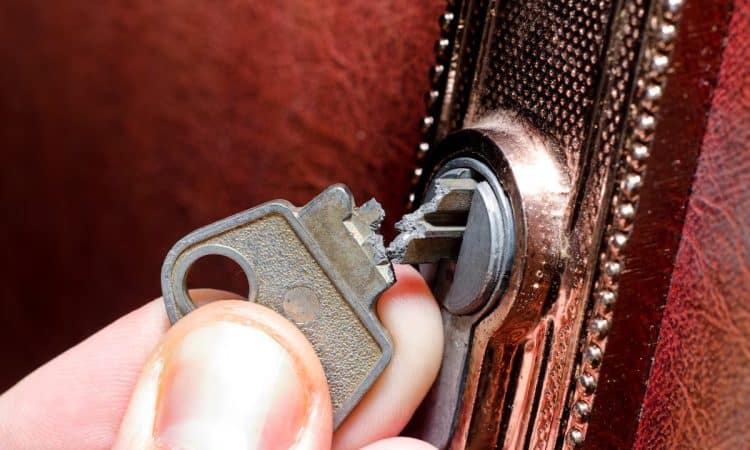
We’ve all been there. You’re locked out of your house, and your keys are broken. It’s frustrating, right? Well, don’t fret! There are several effective methods for removing the fragments without damaging the lock.
Here are three techniques that can be used: the use of tweezers or needle-nose pliers, the use of a powerful magnet and the use of a hot silicone rod.
Method 1: using tweezers or needle-nose pliers
The most direct method for removing a broken key is to use tweezers or needle-nose pliers, especially if part of the key is protruding from the lock.
- Preparation: It is essential to ensure good lighting in the work area. It is recommended that a spray lubricant, such as WD-40, be applied to the lock to facilitate the process.
- Use of pliers: If the broken key is protruding far enough, fine-nosed pliers or tweezers should be used to grasp the visible fragment. A firm grip should be maintained and pull gently to prevent the fragment from being pushed further into the lock.
- Removal: Once the key has been removed, it is important to check the lock to ensure that no fragments remain. If the lock is clean, a new key can be tried to verify its operation.
This method is effective when a significant portion of the broken key is accessible. However, if the fragment is further in, it may be necessary to consider another method.
Method 2: Use a strong magnet
If the faucet fragment is made of ferromagnetic metal, such as steel, a strong magnet may be an effective solution.
- Select the magnet: A strong magnet should be used, preferably a neodymium magnet that can attract the metal.
- Place the magnet: The magnet should be placed close to the lock, trying to attract the broken key fragment.
- Gentle movements: Gentle movements should be made to avoid pushing the fragment further in. Once the magnet attracts the fragment, it should be carefully removed.
This method is useful when the key fragment is made of a magnetic material and is accessible to the magnet.
Method 3: using a hot silicone bar
Using hot silicone is a less conventional but effective technique, especially if the broken key is completely inside the lock.
- Preparation of the silicone bar: The silicone bar should be heated in a silicone gun until it is sufficiently liquid.
- Application: A small amount of hot silicone should be applied to the lock, focusing on the area where the key fragment is. The silicone should be allowed to cool and harden. The silicone will stick to the key fragment.
- Removal: Once the silicone is completely dry, gently pull on the silicone to remove the key fragment. It is important not to apply too much force to avoid damaging the lock.
This method is suitable for fragments that are completely inside the lock, providing additional grip for removal.

